Table of Contents
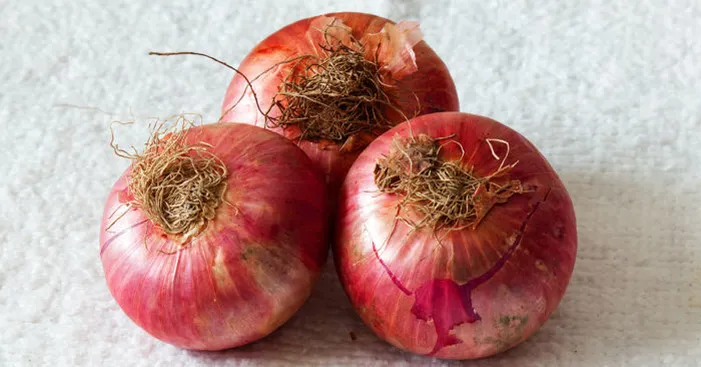
Are you tired of the bland taste of regular onions?
Look no further than the vibrant and flavorful red onion!
Not only does it add a pop of color to any dish, but it also packs a punch of health benefits. (1)
From preventing cancer to regulating blood sugar levels, red onions are not only delicious but also a powerhouse of nutrition.
Keep reading to learn more about the benefits of red onions and how to incorporate them into your cooking.
We will share with you some information on the beautiful red onion, sharing some tips about how to store it? what benefits it has for the body? and what makes it stand out among the rest of the onions?
I can promise you one thing “you won’t be crying after you read this article”!
Red onions calories:
Also known as purple onions, this vegetable differs from other types of onions as it’s mostly consumed as raw slices inside a burger or salad.
They can also be cooked in many ways, they can be grilled or used in a stew dish because they offer a wide variety of uses.
Red onions can be a very useful choice for people on a diet as they provide many nutrients with few calories.
A medium red onion usually weighs between 150 and 170 grams and contains: (2)
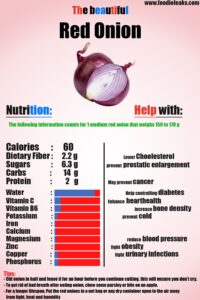
- Calories: 60 calories
- Carbs: 14 grams
- Protein: 2 grams
- Fiber: 2.2 grams
- Sugars: 6.3 grams
- Water: 88%
- Vitamin C: 13.2 %
- Vitamin B6: 13.85%
- Potassium: 6.8%
- Iron: 2.4%
- Calcium: 3.1%
- Magnesium: 4.1%
- Zinc: 2%
- Copper: 7.2%
- Phosphorus: 8.7%
Red onion nutrition facts:
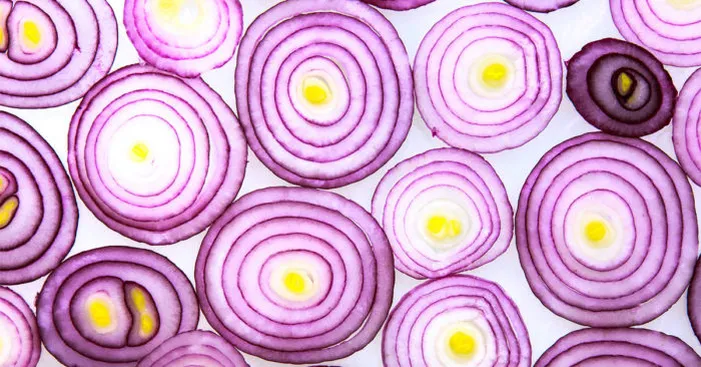
Many studies have shown proof of the benefits you get from eating onions regardless of the color.
Onion is a vegetable very rich in sulfur components and antioxidants which appear to play a huge role in preventing diseases.
So what distinguishes red onions from other onions?
The first thing that makes red onions unique is the color.
The vibrant red is due to the presence of anthocyanins and flavonoids. (3)
It is estimated that red onions in particular contain more than 25 different anthocyanins.
Recent researches indicate that these components are responsible for fighting free radicals and boost our immune system with their anti-viral and anti-cancer properties. (4)
Consuming red onions regularly has been linked to a reduced risk of many diseases including colds, high blood pressure, heart disease, cancer, obesity, and urinary infections.
Additionally, red onions are a good source of iron, chromium, fiber, vitamin C, and many other nutrients.
So how exactly do red onions benefit our bodies?
Reduces the risk of diabetes:
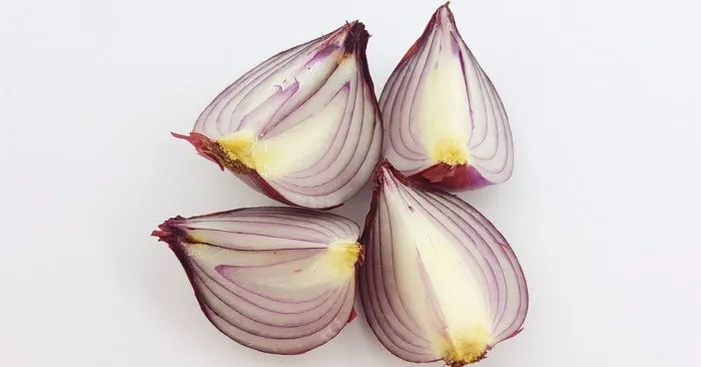
In 2010, SAGE journals one of the worldwide recognized research journals published a preliminary study showing that consuming 100 grams of red onions reduced significantly the levels of fasting blood glucose for people who deal with type 1 and type 2 diabetes. (5)
It has also shown that the same dose of 100 grams of red onions reduced, after just 4 hours of consumption, the inducted hyperglycemia for type 1 and type 2 diabetes patients.
Red onions can be used as a nutrient to help control type 1 and type 2 diabetes.
But it should also be noted that a moderate consumption is always necessary.
This is because, consuming large quantities of red onions may reduce blood sugar levels below the recommended average.
Also, consuming red onion while taking diabetic medicines that reduce blood sugar, may bring an unwanted effect and you should always consult your doctor to regulate the dose of medicines you can safely have while eating red onion.
May prevents prostate enlargement (hyperplasia):
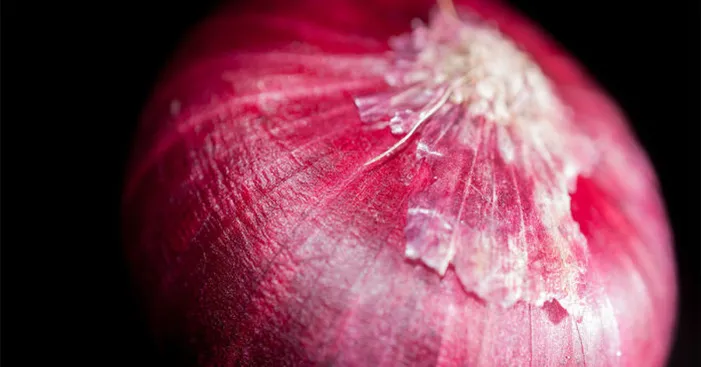
This condition is also referred to as “Adenosis” and it is caused by an excessive amount of organic tissue produced during cell proliferation.
Which causes some organs to enlarge and sometimes become confusing to differentiate from tumors.
In 2014, a study has been made by several researchers shows that methanolic extracted from red onion is associated with a low risk of developing atypical enlargement prostate. (6)
Consuming red onion will provide your body with anti-inflammatory properties, as it is rich in flavonoids, a compound responsible for immunity enhancement and antioxidant activity.
Reduces cholesterol levels in the blood:
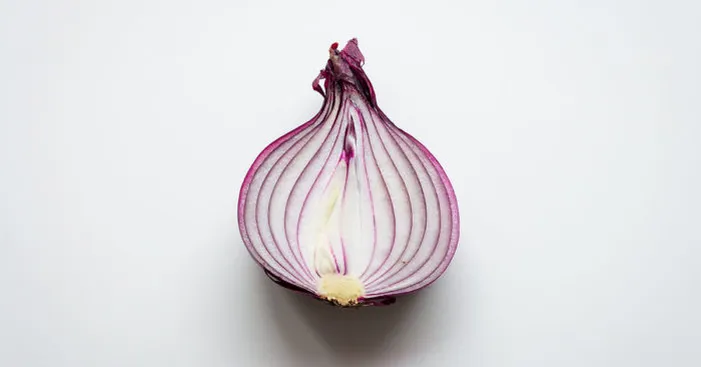
Introducing red onions in your diet will reduce bad cholesterol levels in your blood.
Red onion is very rich in anthocyanins, the components that make it red, which help to strengthen the blood vessels.
These same components are proven to be able to reduce bad cholesterol LDL in the blood while promoting the increase of good cholesterols HDL. (7)
Eating red onions daily for 3 months will reduce cholesterol levels by more than 20%.
Enhances heart health:
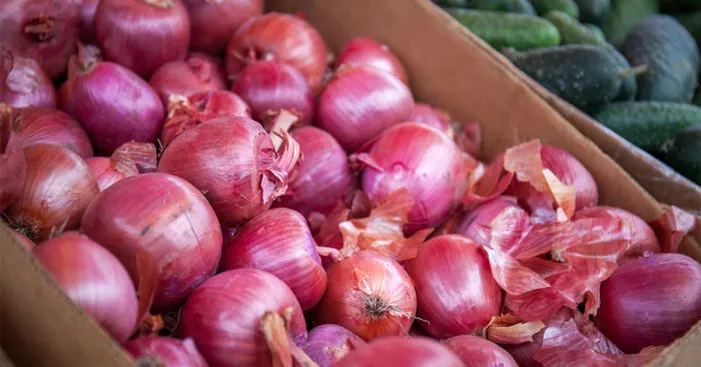
Red onions are full of nutrients that have the ability to fight inflammation, lower cholesterol, and triglycerides (a type of lipid found in the blood).
As a result, by eating red onion regularly it can reduce the risk of heart diseases. (8)
One of those nutrients is sulfuric acid which has been proven to reduce cardiovascular disease.
Another component found in red onion is thiosulfinate which works as a natural anticoagulant and that reduces the risk of strokes.
Have anti-cancer properties:
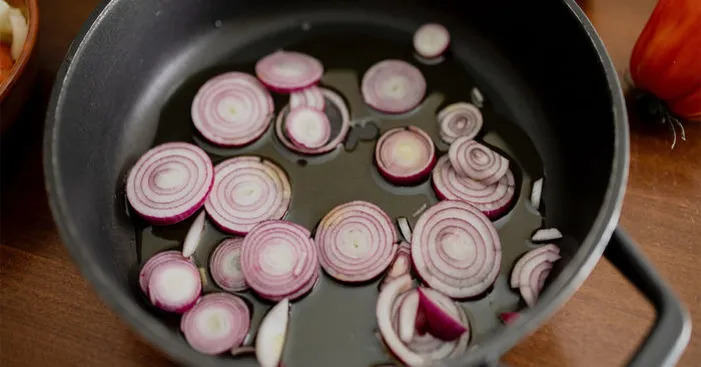
Onions have always been used for their properties to fight cancer but the most effective type is red onion.
Red onions have the ability to destroy cancer cells in the case of colon or breast cancers.
This vegetable contains a plant pigment called Quercetin which is an effective antioxidant that fights free radicals in the body.
As mentioned above, anthocyanin found in red onions may reduce the risk of cancer by eliminating carcinogens from the liver, recovering damaged DNA, and neutralizing free radicals. (9)
When eating regularly, red onions will ensure that your body has more immunity against developing certain types of cancer.
Increases bone density:
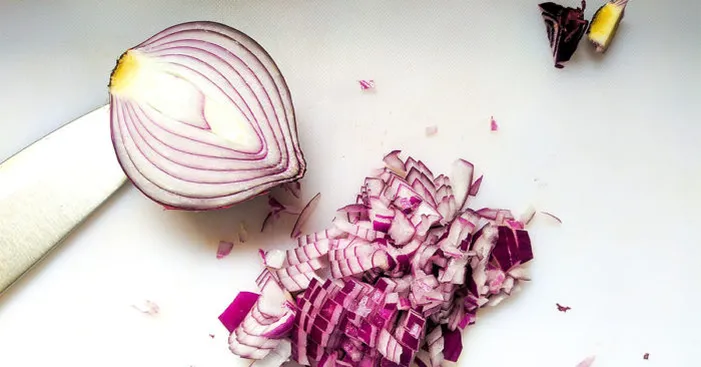
Several studies conducted on humans have shown that red onions can help increase our bone density.
In fact, it is mostly beneficial for women who reached menopause as they experience loss in their bone density and that makes them more vulnerable to fractures.
Hip fractures are common among women who have passed menopause and regular consumption of red onions may reduce that risk. (10)
On the other hand, the high sulfur content found in red onions nurtures our connective tissues which can result in denser bones less exposed to fractures.
Side effects of eating too many red onions:
Regardless of all of the benefits that we get from consuming red onions, it is known that consuming too much of anything can cause health issues and red onions aren’t an exception.
Eating too many red onions could cause some side effects including digestive problems, bad breath, stomach gas, diarrhea, and irritations. (11)
Some people are allergic to onions and by consuming it, or sometimes just touching it, could experience rash, redness, and stomachaches.
Tips:
Why I cry when I cut onions and how to avoid it?
An article was published by the University of Wisconsin Madison in USA which proved the presence of Alliinase in onions as the common reason to cause tears when cut. (12)
Aliinase are types of enzymes that interact with the water of the eyes and cause irritation to their nerve cells which stimulate the production of tears.
To avoid crying when you cut onions:
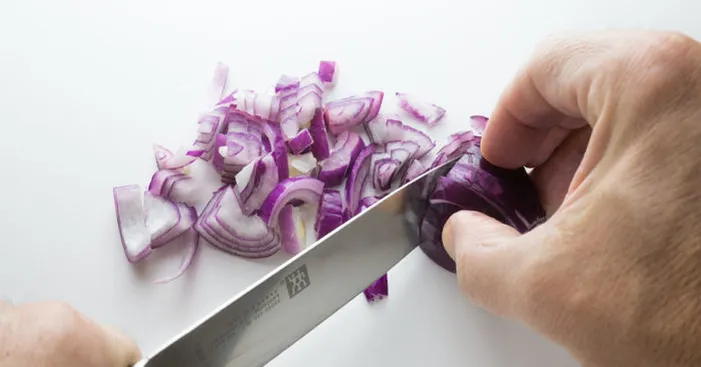
- Cut the onion in half and leave it for an hour.
This will limit the effect of the Aliinase enzymes and you can then continue cutting the onion without worrying about having teary eyes.
How to lose red onion’s smell in your hands and the bad breath after eating it?
Many people are annoyed by the smell of red onions whether if it’s the smell that stays in your hands after cutting it or the bad breath after its consumption.
Here’s how to lose that smell:
- After cutting red onions, wash your hands with cold water and then use some baking soda instead of soap.
The salt will react with the remaining of the onion and help wash it off.
You can then use soap and warm water to wash your hands again and that should take away the smell. - After eating red onions try chewing on some parsley or take a bite from an apple, they both have the ability to fight that bad breath and refresh it.
How to store red onions?
Just like other types of onions, red onions can last up to a month if stored correctly.
They should be stored in a dark and dry place.
Do not put red onions in a container or an airtight bag as that accelerate the rancidity and lower its lifespan.
Instead, put the red onions in a net bag or any dry container open to the air away from light, heat, and humidity.
References:
(1): Immunomodulatory Effect of Red Onion (Allium cepa Linn) Scale Extract on Experimentally Induced Atypical Prostatic Hyperplasia in Wistar Rats.
(2): FoodData Central (usda.gov)
(3): Why does the onion lose its colour when fried in oil? – The Hindu
(4): Anthocyanins Benefits and Food Sources (verywellhealth.com)
(5): Preliminary Study of the Clinical Hypoglycemic Effects of Allium cepa (Red Onion) in Type 1 and Type 2 Diabetic Patients (nih.gov)
(6): Immunomodulatory Effect of Red Onion (Allium cepa Linn) Scale Extract on Experimentally Induced Atypical Prostatic Hyperplasia in Wistar Rats (hindawi.com)
(7): Anthocyanin Supplementation Improves HDL-Associated Paraoxonase 1 Activity and Enhances Cholesterol Efflux Capacity in Subjects With Hypercholesterolemia | The Journal of Clinical Endocrinology & Metabolism | Oxford Academic (oup.com)
(8): Red onion helps prevent heart disease – Times of India (indiatimes.com)
(9): Red Onions Pack a Cancer-Fighting Punch, Study Reveals – U of G News (uoguelph.ca)
(10): The association between onion consumption and bone density in perimenopausal and postmenopausal non-Hispanic white women 50 years and older – PubMed (nih.gov)
(11): Do Onions Have Any Downsides or Side Effects? (healthline.com)
(12): This Enzyme Is Why Onions Make You Cry | Smart News | Smithsonian Magazine
